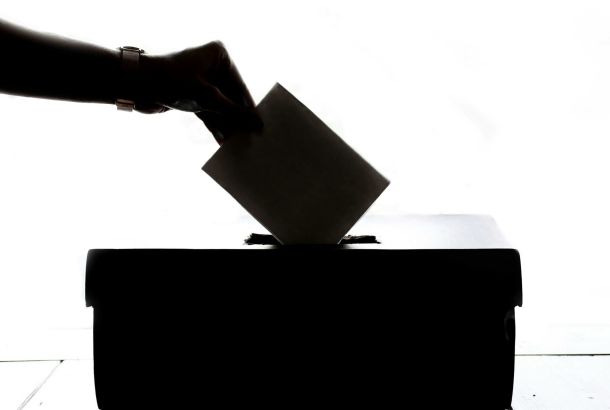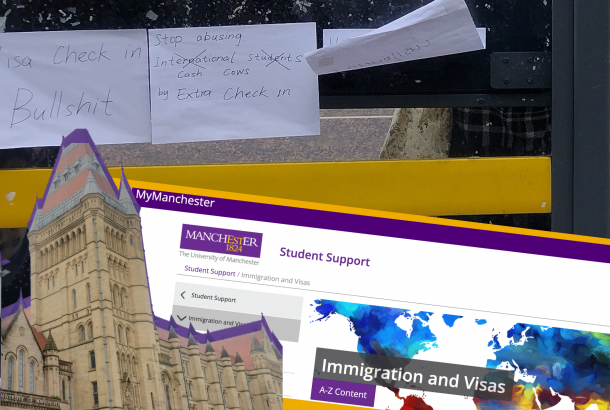The true cost of university sports: membership fees increase by up to 35%

Some of the University of Manchester’s (UoM) most popular sports have had their annual membership fees increased by up to 35% in the last 4 years, The Mancunion has found. UoM students are sometimes paying up to £130 more for a yearly membership than students at comparable universities.
The Mancunion spoke to a student who was previously on the committee for Men’s Football, and they told us the change in membership fees “has been difficult.” “A steep rise” in fees “has put a strain on other social commitments” and “being able to afford rent.” An increase in fees has also resulted in the club finding it a lot harder to get membership fees paid on time.
Men’s 1st Team Football at UoM is the most expensive when compared to other universities. An annual 1st Team membership will set you back £315 compared to £200 for a University of Nottingham student, and £100 for a University of Leeds student.
Increases have also been seen within Women’s Football. Fees have risen by £25 with the cheapest 2023 membership costing £140, compared to £115 in September 2018.
It is similar story for other popular sports. A yearlong Men’s Cricket membership in September 2018 would have set you back £100, however this has now gone up by 35%, with students now paying at least £135 this current academic year.
UoM also offers a more expensive annual Men’s 1st Team Cricket membership, coming in at £200. This is £130 more than the University of Leeds and £70 more than the University of Nottingham.
Hockey has followed suit too. Men’s Hockey membership has risen by £50, from £125 in 2018 to at least £175 today.
Women’s Lacrosse has also increased, from £150 in 2018 to £200 in the most recent academic year. When compared to other universities, UoM’s prices remain higher; a 1st Team Lacrosse membership costs £120 at The University of Nottingham.
Women’s Rugby Union is also the most expensive when compared to other universities. A 1st Team Women’s Rugby Union membership costs £200 at UoM, compared to £155 at the University of Nottingham.
Sport societies play a huge role in maintaining and improving both physical and mental health. UoM’s website states that university sports help students with “staying fit and healthy” whilst “giving your brain cells valuable downtime from study.” The accessibility and affordability of these societies for students is an important factor to consider. In a cost of living crisis, it is crucial to assess what the University is doing to help students financially, particularly for sports.
So then, can sports societies be considered accessible?
One point of conversation which was raised with us on multiple occasions was the establishment of the AP system, which began in September 2021. The AP system is a performance-based system where different prices are charged depending on the level of sport you play. The system ranges from AP 1, which is for more recreational sport, to AP 3, which is more competitive. On top of this, there is also a performance programme for £320 a year, which three teams are currently involved with.
Students raised several concerns they had with this new system. Students told us how they felt the increase in price was “disproportional considering the benefits” and that it had resulted in students paying more for a very similar experience.
We also discovered that students felt the new system was geared towards more popular sports which have a larger emphasis on high level performance. Students told us how this has resulted in less popular sports suffering from a fall in paid members, which has further exacerbated the financial pressure of running a smaller sports society. One student told us how they felt UoM Sport “does not support clubs in any way other than for its performance members.” A student on the Table Tennis Society committee also told us that the rise in membership fees along with the expansion of Sporticipate has resulted in less students playing competitively.
As a result of the AP system, one student told us they now receive reduced funding. Under the new system, essentials like coaching and equipment are no longer covered unless the club pays for an AP profile. This has meant that some clubs have had to increase their membership fees to make ends meet. Another student involved in running a sports society told us that the increase in fees has been “tough” and described the change over the last few years as “a pretty big jump.”
Another student felt that their concerns about the AP system “hadn’t been listened too” and that they had “been ignored” by the University when raising concerns about the system.
However, UoM Sport does have measures in place to reduce the financial burden of playing a sport. The University runs the Sporticipate programme, described on their website as “a wide and varied range of accessible, inclusive sport and activity for everyone.”
Sporticipate aims to provide an affordable route into sports for students that may not have had the opportunity to play before, through running free weekly sessions. Sporticipate received £81,209 in funding in 2022-23, which is an increase of £9,583 on the £71,626 the programme received in the 2021-22.
In addition, the Students’ Union also runs the Access to Recreation programme, which is designed to ensure every student can afford to take part in the recreational activity of their choice. This programme ensures students are able to afford society memberships, sports kit, equipment and end of year ball tickets. In the most recent academic year, £44,412.90 was given to 368 students from the Access to Recreation scheme, with £24,176.69 of this being given for specifically sports related activities.
Membership fees for sports at the University do include supplementary benefits such as gym memberships which is often not the case at other universities. However, this gym membership is automatically included within the AP, even if it may not be required for the sport they are playing. A student involved with the Table Tennis society told us how their members were paying for gym memberships when their sport didn’t need them. When they asked if they could take this cost out, they were told they would be unable to do so.
We spoke to a member of a sports society, who wished to remain anonymous, to better understand how clubs decide their recreational fees. Recreational memberships are separate from the AP system and their prices are decided by individual clubs at the beginning of each academic year. They told us how fees are decided through estimating the price of venue hire and travel, as well as expected number of members.
This results in clubs predicting the amount of money they need a year in advance, creating what could be a precarious financial situation for teams if a year does not go as expected.
Despite this, it is important to note that there were some sports whose prices had risen below the rate of inflation or even fallen in the 4-year period we assessed. The average Tennis society membership has fallen by £25, decreasing from £165 to £140. A Surf society membership is £15 cheaper now than it was in 2018. Both the Cycling club and Gymnastics club have only increased by £5 each.
As well as this, most membership fees, including all AP3 memberships, have had their prices frozen for the 2022/23 academic year, helping to keep more students active.
A spokesperson from the University of Manchester’s Sport Department said:
“We recognize that participating in sport and physical activity is something that costs money, and with around 15,000 students and staff taking part in our programs, there is a finite amount of resource that can be provided to support opportunities for all students.
“With external service costs increasing everywhere, cost comparisons with memberships from previous years or other institutions do not paint an accurate picture as to what is provided with current offers. For example, our Team Manchester team memberships are significantly subsidized by the University, and if compared to equivalent/similar offers of other universities, their cost point would be similar if not more expensive when looking at services provided. We also offer significantly discounted student gym membership offers (£120/year with Active Manchester), and a range of free beginner activities to provided accessible opportunities to all (Sporticipate Program). A few years back, the 2-year Sport review process, which included significant positive student club and SU colleague involvement, moved away from the historic funding model solely around an ‘AU’ to an athlete profile led approach. The aims of this process were to best meet student needs and to provide a fairer, cost sustainable model for everyone to take part in sport and physical activity at all levels.
“We are consistently working to make sport more affordable and accessible for all, and we acknowledge that cost can be a barrier, so we make all students aware of the Access to Rec Grant for those who genuinely need financial support. The amount students can apply for has risen to up to £250 this year. Please look on our website for a further value piece that summarizes all of the work we do to help engage and benefit the student experience.”
The University of Manchester Students’ Union was also contacted for comment. Robbie Beale, Activities and Culture officer said:
“I am aware that membership and associated fees for clubs have risen quite significantly over the last few years, with many clubs’ memberships stretching into hundreds of pounds. I know that our clubs work incredibly hard to keep costs down for students, but students tell me that we seem to be seeing prices rising faster in sports than at other Universities or with other group activity. This is something I will look into.
“Across Access to Recreation, Access to Graduation, and Access to Summer, £130,124.71 was allocated. Of this amount £122,066.11 was claimed by recipients.”







